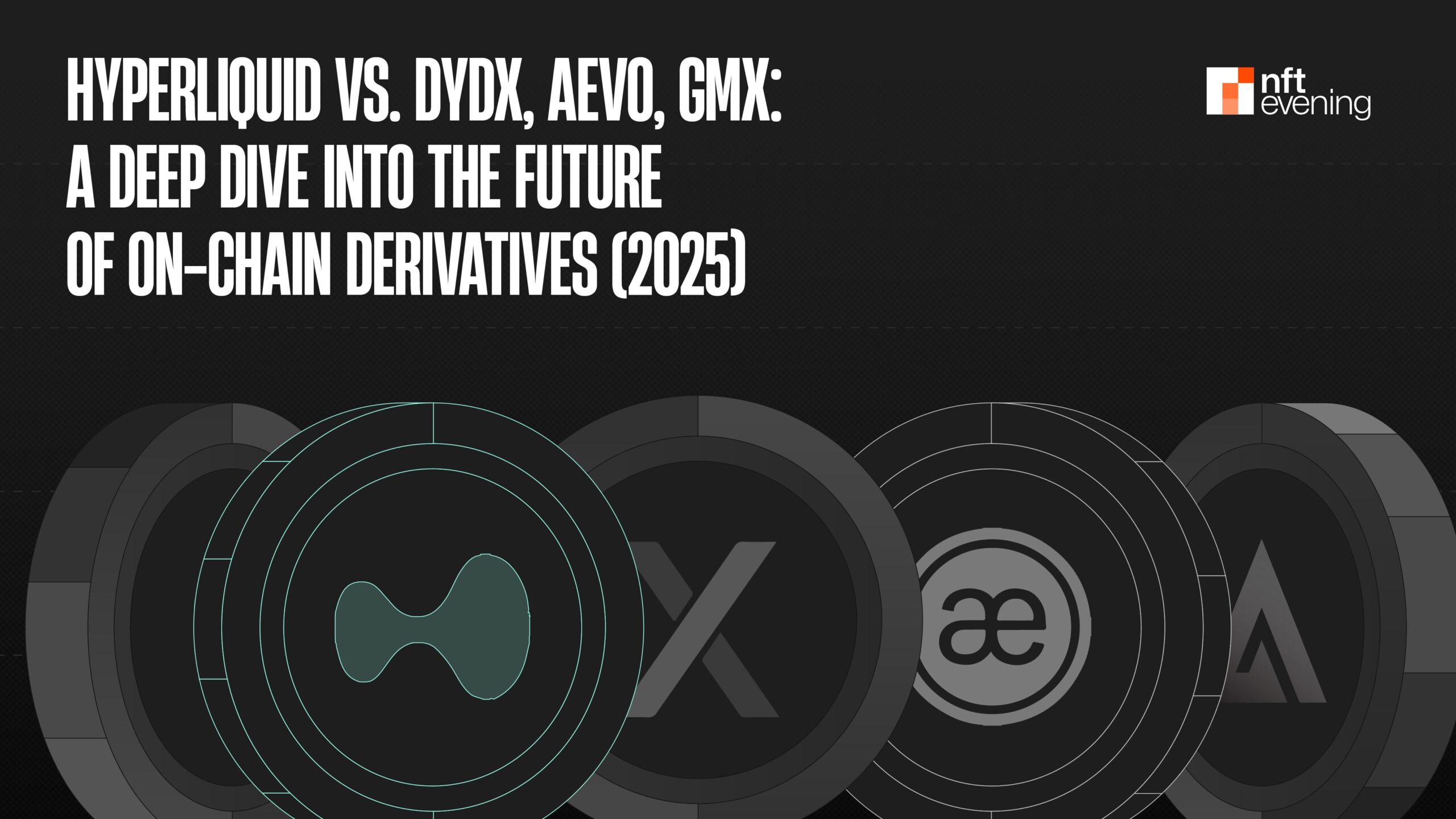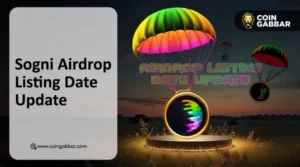Exploring the Future of Derivatives: Trends, Innovations, and Insights

Hyperliquid Emerges as a Leader in On-Chain Derivatives Trading
As decentralized finance (DeFi) continues to advance, the competition for supremacy in the derivatives market has become increasingly fierce. The rise of on-chain perpetual trading has led to the emergence of platforms like dYdX, Aevo, and GMX, but none have made as significant an impact as Hyperliquid. Since launching its mainnet in 2023 and introducing HyperEVM in early 2025, Hyperliquid has set a new benchmark for on-chain efficiency, transparency, and user engagement.
Architectural Innovations: Speed vs. Decentralization
Hyperliquid operates on a custom Layer-1 blockchain specifically engineered for high-frequency trading. Central to its architecture is HyperBFT, a Byzantine Fault Tolerant Proof-of-Stake consensus mechanism that achieves block finality in under a second and boasts a throughput of approximately 100,000 transactions per second (TPS). This, combined with its proprietary HyperCore and HyperEVM, ensures that all trades, orders, and liquidations are executed entirely on-chain.
With its specialized Layer-1 capable of processing over 100,000 orders per second, Hyperliquid significantly outstrips its competitors. In contrast, most decentralized perpetual protocols manage only a few thousand operations per second. For instance, GMX, which operates as an Automated Market Maker (AMM) on Arbitrum, and Vertex, an order book platform on Arbitrum, are limited by Ethereum Layer-2 speeds, achieving around 2,000 orders per second at best.
Hyperliquid’s dedicated blockchain does not share its blockspace or throughput with other decentralized applications, allowing for much greater scalability. Even dYdX v4, which launched its own application chain on the Cosmos blockchain in late 2023, has lower theoretical throughput. dYdX’s reliance on the Cosmos SDK and Tendermint consensus typically results in block times of 1 to 2 seconds, which is still slower than Hyperliquid’s sub-second finality. The pipelined HotStuff consensus and optimized networking of Hyperliquid provide a distinct advantage in speed, reflected in its trading volumes. By the fourth quarter of 2024, Hyperliquid was already processing five times the trading volume of its closest on-chain rival, dYdX and GMX.
In December 2024 alone, Hyperliquid recorded approximately $160 billion in perpetual trading volume, leaving dYdX far behind in market share. Hyperliquid also offers higher leverage options, allowing up to 50x compared to dYdX’s 20x and GMX’s similar limits on major pairs, though GMX is less liquid at extremes. Additionally, Hyperliquid supports over 130 markets, while dYdX had around 30 to 40 at that time, and GMX and Aevo offered similar ranges. Aevo, built as an Optimism-based Layer-2, also aims for high throughput but is constrained by Ethereum’s speed, allowing only up to 20x leverage.
In summary, Hyperliquid provides performance levels akin to centralized exchanges, a crucial factor in attracting active traders from slower platforms.
User Experience and Liquidity
Both Hyperliquid and dYdX aim to replicate the experience of leading centralized exchanges. They offer sophisticated web interfaces featuring TradingView charts, advanced order types, and cross-margining capabilities. Hyperliquid’s user interface and matching engine ensure rapid order execution and seamless order book updates, a noticeable improvement for users transitioning from other decentralized exchanges that may feel sluggish.
A significant advantage for Hyperliquid is the absence of gas fees on trades. Unlike dYdX’s new chain, where users must hold $DYDX or other tokens to cover transaction fees, Hyperliquid eliminates this barrier. Aevo, as an Optimism rollup, requires ETH for gas on each transaction, adding complexity and costs. GMX users on Arbitrum also incur gas fees for trades or collateral adjustments, and GMX’s interface is simpler, with fewer order types. Hyperliquid’s model of zero gas fees and low trading costs makes it particularly appealing for high-frequency trading strategies that involve numerous orders.
Moreover, Hyperliquid supports features such as conditional orders, partial fills, and an API/WebSocket for algorithmic trading, aligning with dYdX’s offerings while surpassing the basic functionalities of AMM-based competitors.
Another distinguishing factor is asset support; Hyperliquid’s flexible listing framework (HIP-1 auctions) allows for quicker listings of a diverse range of assets, including newly launched tokens. For instance, during the memecoin craze, Hyperliquid swiftly added popular meme coins to its perpetual exchange, while dYdX and others lagged behind. Although Aevo offers crypto options trading, which Hyperliquid currently lacks, it is widely recognized that Hyperliquid provides a more refined trading experience, especially for smaller markets and a variety of assets.
Both platforms feature comparable charting and analytics, but Hyperliquid’s integrated vaults introduce a social investing aspect (copy trading via vaults) that dYdX and Aevo do not offer. However, some newcomers may find Hyperliquid’s interface and features somewhat complex, while GMX presents a more straightforward option. Nevertheless, for seasoned traders, Hyperliquid delivers the most comprehensive feature set among decentralized exchanges, effectively matching the functionality of platforms like Binance or Bybit.
Expanding Product Offerings
While all four platforms began as perpetual DEXs, their paths have diverged significantly:
- Hyperliquid has expanded its offerings to include spot trading, staking vaults, and permissionless token listings through HIP-2 auctions.
- dYdX remains focused solely on perpetual trading.
- Aevo has branched out into options, structured products, and vault strategies, positioning itself as a comprehensive DeFi options platform.
- GMX continues to concentrate on perpetuals but has launched V2 with enhanced pool mechanics.
In conclusion, both Hyperliquid and Aevo are rapidly diversifying their services. Hyperliquid’s combination of spot trading, perpetuals, and vaults positions it as the most complete DeFi trading suite available.
Developer Ecosystem and Composability
With the introduction of HyperEVM, developers can now deploy smart contracts directly on the Hyperliquid exchange using existing Solidity code, gaining access to native trading features via HyperCore. Projects can:
- Integrate with live trading data (e.g., liquidations, price feeds, API).
- Launch vaults, automation tools, and structured products.
- Generate revenue through builder codes that share protocol fees.
To date, around 170 projects have been deployed, and total value locked (TVL) has reached approximately $1.7 billion by mid-2025, according to various reports. This figure likely includes user collateral (USDC deposits) on the platform. VanEck’s analysis in December noted that Hyperliquid amassed around $2.2 billion in TVL within 15 months, significantly outpacing GMX’s $600 million during a similar timeframe. This indicates a substantial influx of liquidity providers and traders placing their trust in the platform. User growth has also been remarkable, with Hyperliquid doubling its user base following the HYPE airdrop, onboarding over 170,000 new users almost instantly.
In contrast:
- dYdX has limited EVM compatibility and a smaller ecosystem. After dominating the space in 2021-2022, it has seen its volumes stagnate or decline during its transition to new chains, allowing Hyperliquid to capitalize on this opportunity.
- Aevo supports composability within its rollup but lacks the native liquidity engine that Hyperliquid offers.
- GMX, while maintaining a large TVL in its GLP pool and being popular for zero-price-impact swaps, primarily attracts a different segment of users focused on lower-frequency, more passive liquidity provision.
Hyperliquid stands out in terms of on-chain composability, incentivized builder programs, and integration flexibility.
Tokenomics and User Engagement
The HYPE token serves multiple functions:
- It acts as the gas token for HyperEVM.
- It enables governance through HIP proposals.
- It is used for validator staking to ensure network security.
- It provides trading fee discounts of up to 40%.
- It serves as both collateral and a speculative asset on Hyperliquid.
Notably, Hyperliquid issued HYPE without any venture capital allocations. The 2024 airdrop distributed 31% of the total supply to users, while 38.8% is reserved for emissions. This structure eliminates the risk of venture overhang and promotes organic community growth.
| Protocol | VC Allocation | Fee Rebates | Real Yield | Governance | Token Utility |
|---|---|---|---|---|---|
| Hyperliquid | None | Up to 40% | Yes (via HLP) | Yes | Gas, staking, discount |
| dYdX | High | None | No | Yes | Governance only |
| Aevo | Moderate | Yes | Partial | Yes | Fee discounts |
| GMX | Low | Minor | Yes (via GLP) | Yes | Staking, governance |
Market Metrics and Share as of July 2025
| Metric | Hyperliquid | dYdX | Aevo | GMX |
|---|---|---|---|---|
| Daily Perp Volume | $8–12B+ | ~$1.5B | ~$300M | ~$700M |
| Total Value Locked | ~$1.7B | ~$420M | ~$160M | ~$630M |
| Perpetual Market Share | ~70% | ~9% | ~2–3% | ~5% |
| Unique Users | 400K+ | 150K+ | <50K | ~100K |
Hyperliquid has captured a significant portion of the decentralized perpetual market, driven by:
- Real-time execution capabilities.
- Complete on-chain transparency.
- Yield generated through vaults.
- Deep liquidity in both spot and perpetual markets.
No other decentralized exchange currently rivals Hyperliquid in terms of trading volume, user retention, or ecosystem growth.
Conclusion: Hyperliquid’s Dominance in 2025
Hyperliquid is not merely another derivatives DEX; it represents a high-performance Layer-1 platform that has redefined the possibilities for on-chain trading. It combines:
- The speed and accuracy of centralized trading platforms.
- The transparency and fairness inherent in DeFi.
- A community-focused model devoid of venture capital influence.
While dYdX and Aevo provide strong alternatives for niche traders or specific ecosystems (like Cosmos or options), and GMX continues to cater to passive liquidity providers, Hyperliquid stands out as the leading protocol in terms of scale, innovation, and user alignment.
As of mid-2025, Hyperliquid is not only leading in trading volume but also constructing a cohesive, composable DeFi ecosystem, with HYPE at its core. For traders, developers, and long-term investors, Hyperliquid represents the most compelling on-chain trading platform of the year.







